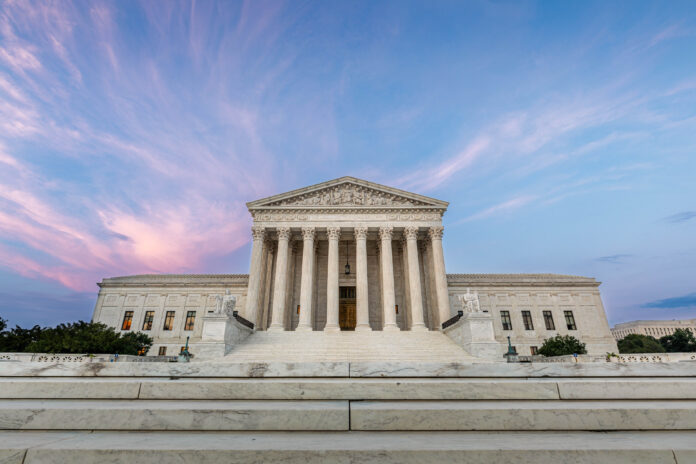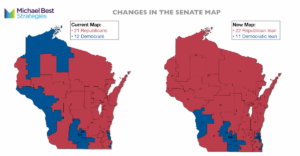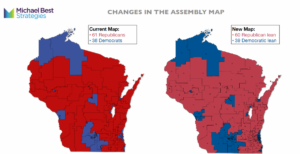
On Wednesday afternoon, the Supreme Court of the United States (SCOTUS) overturned the Wisconsin Supreme Court’s decision to use the State Assembly and State Senate maps proposed by Wisconsin Governor Tony Evers. The maps approved by the State Supreme Court would have been effective for elections beginning on August 9th, 2022.
The Court ruled that the state court had erred in “its application of decisions… regarding the constitutional guarantee of equal protection and the Voting Rights Act (VRA).”
The State Legislature and other parties appealed the Wisconsin Supreme Court decision to the U.S. Supreme Court, arguing that the Wisconsin Supreme Court had “selected race-based maps without sufficient justification.” Specifically, they claimed that the maps violated the Equal Protection Clause of the 14th Amendment to the United States Constitution.
Below are static comparisons of the current maps and the ones proposed by Governor Evers. An interactive version of Evers’ Assembly map can be found here. An interactive version of Evers’ Senate map can be found here.


SCOTUS ruled that the Wisconsin State Supreme Court “committed legal error” in its application of the constitutional guarantee of equal protections and the VRA. Because of this, the decision of the Wisconsin Supreme Court on these two maps was reversed and remanded back to the Wisconsin Court “for further proceedings not inconsistent with this opinion.”
Justices Sonia Sotomayor and Kagan dissented from the majority opinion. The two justices— who fall in the Court’s liberal minority stated, “The Court’s action today is unprecedented. In an emergency posture, the Court summarily overturns a Wisconsin Supreme Court decision resolving a conflict over the State’s redistricting, a decision rendered after a 5-month process involving all interested stakeholders. Despite the fact that summary reversals are generally reserved for decisions in violation of settled law, the Court today faults the State Supreme Court for its failure to comply with an obligation that, under existing precedent, is hazy at best.”
Wisconsin’s redistricting decision even made it into discussions at this week’s confirmation hearing of Supreme Court nominee, Ketanji Brown Jackson. Jackson was questioned on Wednesday about the Court’s use of a “shadow docket.” The so-called “shadow docket”, which describes when SCOTUS makes rapid decisions in an unsigned manner— usually for the sake of flexibility, was used in Wisconsin’s Supreme Court Decision. On the issue of the Court’s usage of the “shadow docket” such as in cases like Wisconsin’s, future Associate Justice Brown stated, “On the one hand, [the Court] has always had an emergency docket; the need for flexibility, the ability to get answers to the party at issue is something that is important in our system… On the other hand, the Court has also considered the interest in allowing issues to percolate, allowing other courts to rule on things before they come to the Court.”





